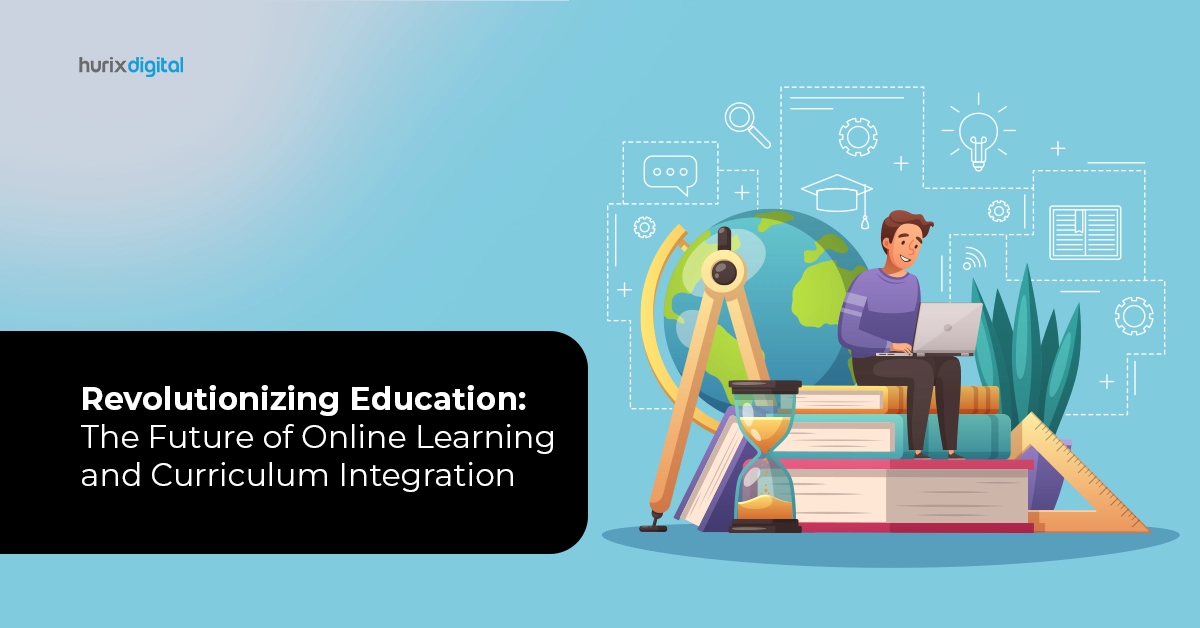
Why Curriculum Integration Should Be a Priority in Education?
More schools and educational institutions are looking at innovative ways of education, and the integration of interdisciplinary and multidisciplinary studies is just the right solution. Disciplines like neurosciences and digital humanities are some great examples here.
To provide more holistic education to students, this method of combining different subjects to create a new discipline can be undertaken to develop a new curriculum. This process refers to curriculum integration, a relatively new and unique learning technique.
This new and improved curriculum aims at making deep connections between the lessons taught in class and practical real-life knowledge for a better understanding that stays with students. Let us learn what curriculum integration is, its different types, and how you can integrate it into the education system for maximum benefits.
Table of Contents:
- Multidisciplinary Integration
- Interdisciplinary Integration
- Transdisciplinary Integration
- Metadisciplinary Integration
- Theme-Based Curriculum
- STEAM Curriculum
- Place-Based Curriculum
- Project-Based Curriculum
- Inquiry-Based Curriculum
What Is Curriculum Integration?
Curriculum integration is the process of creating a new curriculum that comprises a diverse range of subject areas and disciplines. This allows students and learners to draw connections between the various subjects, giving birth to a holistic and broad learning process with deep knowledge of different subjects.
Curriculum integration fosters critical thinking skills and creativity in learners, as it encourages them to explore and make associations between a diverse range of ideas and concepts. Curriculum integration uses service learning to allow students and learners to use various subjects in different contexts.
Also Read: How Do Accessibility Audits Impact Student Retention Rates?
How to Implement Curriculum Integration for Better Learning?
Here are some steps to implement an integrated curriculum for the benefit of students and learners:
1. Aims and Objectives
The most crucial step is identifying the learning objectives you want to meet with curriculum integration. The significant question here is what the students will acquire from this curriculum.
Identifying the concepts, skills, and knowledge you want the students to learn will also be beneficial to chalking down your goals so you can begin curriculum integration successfully.
2. Subject Areas
Once you have traced the aims and objectives, decide the subject areas you want to include in the curriculum.
If you want students to learn about computer science, artificial intelligence, and philosophy, together with gaining analytical skills, include digital humanities. Ensure that the subject areas properly align with the aims and objectives you want to meet with your curriculum.
3. Activities and Assessment
Incorporate comprehensive assessments and fun activities in the curriculum to ensure the students can learn creatively. Including creativity in learning is crucial as 75% of educators see enhanced problem-solving in their kids with its inclusion.
Consider integrating hands-on projects, collaborative group work, or cross-curricular writing assignments where students have more freedom to think and work independently.
4. Implementation
After understanding the aims and ways of execution, it is time to implement curriculum integration in the classroom. Implementation will make it clearer if the curriculum properly aligns with the aims and objectives.
5. Evaluation And Feedback
The most important step to ensuring proper curriculum integration is to evaluate whether students can draw connections between the various disciplines. Collect feedback from each student to refine your curriculum to improve the student learning process.
Levels Of Curriculum Integration
Apart from the steps mentioned above, remember the various levels of curriculum integration to create a more cohesive and interconnected curriculum. These levels include:
1. Multidisciplinary Integration
This type of integration fuses two diverse disciplines to create a new field of study. You can choose to teach both disciplines separately and then gradually integrate them.
2. Interdisciplinary Integration
At an interdisciplinary level, you can integrate two or more disciplines. It involves implementing various teaching and learning techniques to cover all the disciplines.
3. Transdisciplinary Integration
Transdisciplinary integration does not just involve combining two or more disciplines; it offers a holistic and interconnected approach to learning. A few methods involved in holistic education are mindfulness and meditation, project-based activities, physical activities, service learning, etc.
4. Metadisciplinary Integration
The meta-disciplinary level explores the underlying principles of each curriculum discipline in greater depth. A comprehensive connection must be made within all the disciplines to find a common theme.
However, it is important to note that these levels build on to the previous one. You cannot directly jump to the meta-disciplinary level as curriculum providers and educators. You must move ahead one step at a time to provide the students with a meaningful learning experience.
Top 5 Types of Integrated Curriculums for Advanced Learning
Now that you know about the steps and levels involved in curriculum integration, here are the different types of integrated curricula that can benefit the education system. Some major types of curriculum integration are:
1. Theme-Based Curriculum
In a theme-based curriculum, disciplines are integrated based on a common theme. If the theme is social justice, disciplines will be picked from social sciences and humanities like social studies, environmental studies, language arts, etc.
2. STEAM Curriculum
STEAM is a holistic curriculum involving science, technology, engineering, art, and mathematics. The students can get an opportunity to indulge in topics ranging from online machine learning to English literature and much more.
3. Place-Based Curriculum
A place-based integrated curriculum is designed around the local community or environment, with students learning about their community’s history, culture, and natural resources.
4. Project-Based Curriculum
This curriculum requires each student to work on a project to gain extensive knowledge. Individual and group activities like research, analysis, presentations, and oral assignments are given as projects to help the students develop skills from various disciplines.
5. Inquiry-Based Curriculum
An inquiry-based curriculum encourages students to ask questions, enhancing critical thinking skills. Students learn by exploring and discovering new things, with teachers guiding them to use multiple subject areas to find answers to their questions.
Advantages Of Curriculum Integration
Integrated curriculum can play a major role in revolutionizing the education sector, as it encourages better learning with innovative teaching models. Here are some advantages of implementing an integrated curriculum:
- Enhanced and improved outcomes with increased concentration
- Collaborative and communicative learning that teaches students new things
- Efficient use of time with increased focus
- Increased student engagement and interaction for clear understanding and better doubt-clearing
- Relevant learning that students find interesting and that proves to be helpful for them in the long run.
- Increased creativity makes learning fun.
- Problem-solving and critical analysis skills that help students build a brighter future.
- Increased teacher collaboration, which improves communication skills and makes students confident.
Some examples of integrated curriculum activities that have proven to be highly advantageous are science and art collage-making competitions, physical education and health nutrition planning debates, math plus music, songwriting, romance, and science fiction book club, etc.
Such curriculums not only give something new to students but also offer a holistic learning experience. It helps students learn different concepts simultaneously, benefiting them in the future as they have more learning options to choose from as they grow up.
Also Read: Top 5 Trends in Workforce Learning and Development
Closing Thoughts
Curriculum integration is a strong asset that can build the educational foundation of institutes for a brighter and more innovative future. If you are looking for integrated K12 curriculum development companies to help you reach new educational goals every day, contact our experts at Hurix Digital.
We provide the best digital learning solutions that combine technology and innovation to deliver the best learning experience. Our wide range of services, such as production services, custom software development, and learning management systems, helps some of our trusted clients, such as Ikea, Cambridge University Press, Deloitte, FedEx Express, and many more, reach new heights of success.
Feel free to contact us and book a free demo.

Senior Vice President – Business Development
Over 25 years of experience in the edtech and workforce learning industry with strong skills in Business Development, Customer Relationship Management (CRM) and Strategy.






